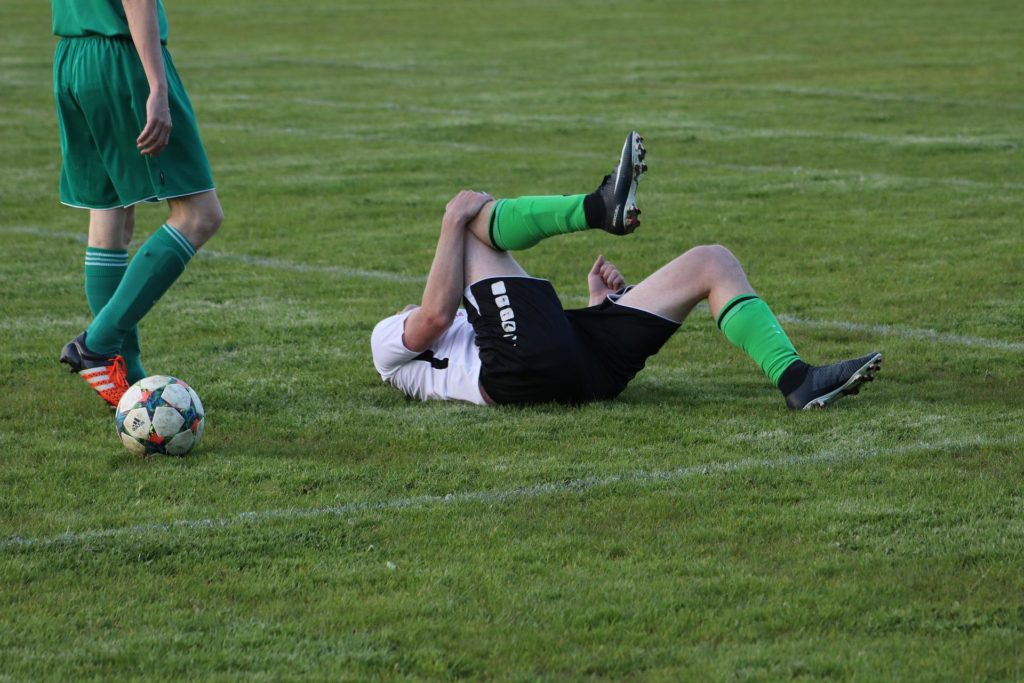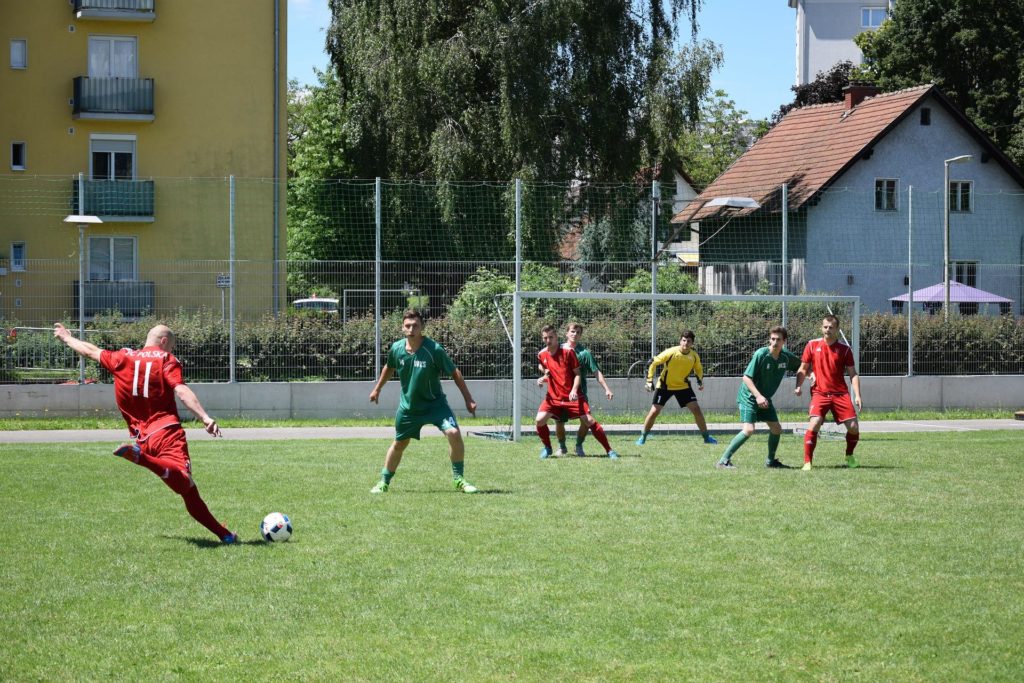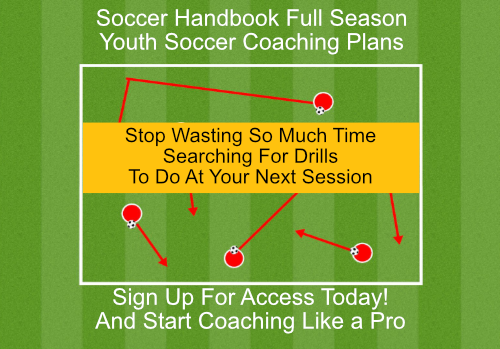Scoring opportunities in soccer are precious. Teams only get so many chances per game, and that’s what makes the soccer free kick (also commonly called set pieces) so valuable. Depending on the location and type of free kick, teams develop different set-piece plays to beat the defense and score.
First, let’s cover some of the fine details and key features of free kicks.
What is a Free Kick in Soccer?
In the simplest terms, a free kick is an unguarded opportunity to kick the ball awarded to you by the referee after you’ve been fouled.

There’s a lot more to free kick soccer game strategies and advantages, so let’s review the fundamentals.
Here are two key features of free kicks or set pieces:
- A free kick can only be awarded by a referee.
- A free kick can be awarded anywhere on the field.
Those two features apply to all free kicks, but here are the three different types of free kicks:
- Penalty Kicks
- Direct Free Kicks
- Indirect Free Kicks
We’re going to go into each kick in more detail, but what should be noted at this point is that teams often pick free kick specialists. These are players in the starting lineup that are the first choice when it comes to free kicks because they have the best chance of scoring a goal.

The role is fluid because a player that’s exceptional at penalty kicks may not do as well at indirect free kicks or direct free kicks. Teams should train multiple free-kick takers.
After all, even if one player on your team is exceptional at all three types, what about if they get hurt or miss the game? You want as many players confident in their free kick abilities as possible so that you can capitalize on these opportunities. Part of being a good soccer coach is helping each player round out their talents.
Often, free kicks can change the outcome of a competitive or close game. In fact, in the next section, we’ll cover one of the free kick types that are most responsible for deciding soccer games.
Penalty Kick: The Ultimate Free Kick
Picture it: your team has moved with possession deftly through the midfield, a well-placed through ball that helps your striker beat the defense, and just as he’s entered the box preparing to shoot he’s brought down from behind by the defending center-back. The referee whistles, and points to the spot.
It’s a penalty kick!
Penalty kicks, also known as “PKs,” are one of the most valuable free kicks in all of soccer. It awards the fouled team a chance to go one-on-one with the opposing team’s goalkeeper for being fouled in the penalty box during a goal-scoring opportunity.
Here are the rules for this high-pressure soccer duel:
- The penalty kick distance is 12 yards (11 meters) for professional soccer. The soccer field is marked with a spot or a line where the ball should be placed for PKs.
- The goalkeeper cannot leave the goal line until the offensive player makes contact with the ball. Leaving the line early can result in the penalty kick being retaken. The arc is used so that all players are at least 10 yards away from the kick.
- All other players must stay out of the penalty box and arc until the ball is kicked.
- The team fouled may choose any player currently on the field to take the penalty kick. They cannot substitute a player on to take the kick. They are not required to make the fouled player take the kick.
- The ball must be kicked forward.
- The kick taker cannot touch the ball again until it has touched another player.
Penalty kicks are the most important direct kicks you can be awarded in soccer. Players who perfect their penalty kick skills are guaranteeing themselves goal-scoring opportunities. However, those same opportunities can often decide games.

Make sure your players are ready to be responsible under that kind of pressure. It’s crucial that the team remains supportive if the designated penalty kick taker comes up short on their attempt. Direct free kicks are a lot like penalty kicks, except every aspect of them is harder.
Direct Free Kick
The team that capitalizes on direct free kicks wins. The ability to convert free kick opportunities into goals reflects a player’s advanced skill set.
A penalty kick requires you to perfect your placement from a single spot to beat the keeper. In contrast, a free kick requires you to hone your shot so that you can beat the keeper, beat the defensive wall, and add a curve to the ball’s trajectory, all from multiple angles and ranges.
Any of the following actions committed with carelessness, recklessness, or excessive force will result in a direct free kick* being awarded to the fouled player’s team:
- charges
- jumps at
- kicks or attempts to kick
- pushes
- strikes or attempts to strike (including head-butt)
- tackles or challenges
- trips or attempts to trip
*If any of these fouls occur within the penalty area, a penalty kick will be awarded.
Direct kicks give the fouled team the option of taking a shot directly on goal or crossing the ball into the penalty area for a teammate to send it home with a header or one-touch. Unlike PKs, which always occur in the same spot, the fouled team must kick from the spot of the foul, which makes it even more difficult.
Further increasing the challenge is that the defending team is allowed to set up a “wall” of three or more defenders. This wall must stand at least 10 yards (9.5 meters) away from the foul spot unless the defenders are already backed up to their own goal line. These players stand shoulder to shoulder and try to block the best flight path for the ball.

Penalty kicks and free kicks are both considered direct free kicks, but the third type of kick penalty you can be awarded is an indirect free kick.
Indirect Free Kick
Converting on indirect free kicks typically requires squads to have basic set-piece plays drawn up because the kick taker cannot shoot the ball directly into the net. This is the biggest difference between Indirect Free Kicks and Penalty Kicks or Direct Free Kicks as illustrated by the table below:
| Penalty Kick | Direct Free Kick | Indirect Free Kick | |
| Penalty Taken From… | Penalty Spot | Where Foul Occurs | Where Foul Occurs |
| Can Score Directly… | Yes | Yes | No |
| Awarded for… | Foul inside Box | Foul Outside Box | Foul Outside Box |
An indirect kick in soccer is awarded if a player:
- Plays in a dangerous manner
- Impedes the progress of an opponent without making contact
- Arguing with the referee, or using abusive language
- Prevents the goalkeeper from releasing the ball from the hands or kicks the ball when the goalkeeper is in the process of releasing it
- Commits any other offense, not mentioned in the Laws, for which play is stopped to caution or send off a player.
Many coaches get lost in theoreticals when working on indirect kick set pieces.
Set piece plays do not have to be complicated to be effective. Lobbing a pass to your teammate for a header chance in the box is a simple indirect free kick soccer play that still scores goals in the highest leagues today.
Free Kicks, Not Free Goals
Training free kicks will undoubtedly give your squad a tactical advantage on the pitch. But it’s also important to keep reality in mind: free kicks are difficult. A free kick goal is a combination of favorable elements and perfectly tuned skills. For example, Bayern Munich recorded 97 goals in their 2021-2022 Bundesliga season, of those 97 less than 20 came off of direct or indirect free kick opportunities.
That’s less than 20% even at the highest levels of the game. Train free kicks and encourage your team to work at them diligently, but have realistic expectations about how often your team will convert.
Sometimes teams will create and train for a specific free kick. In the 2014 World Cup, Germany had a free kick plan to confuse, distract, and even make the other team laugh. Unfortunately, it didn’t produce a goal, but it sure was fun to watch.
Happy kicking from Soccer Handbook!






